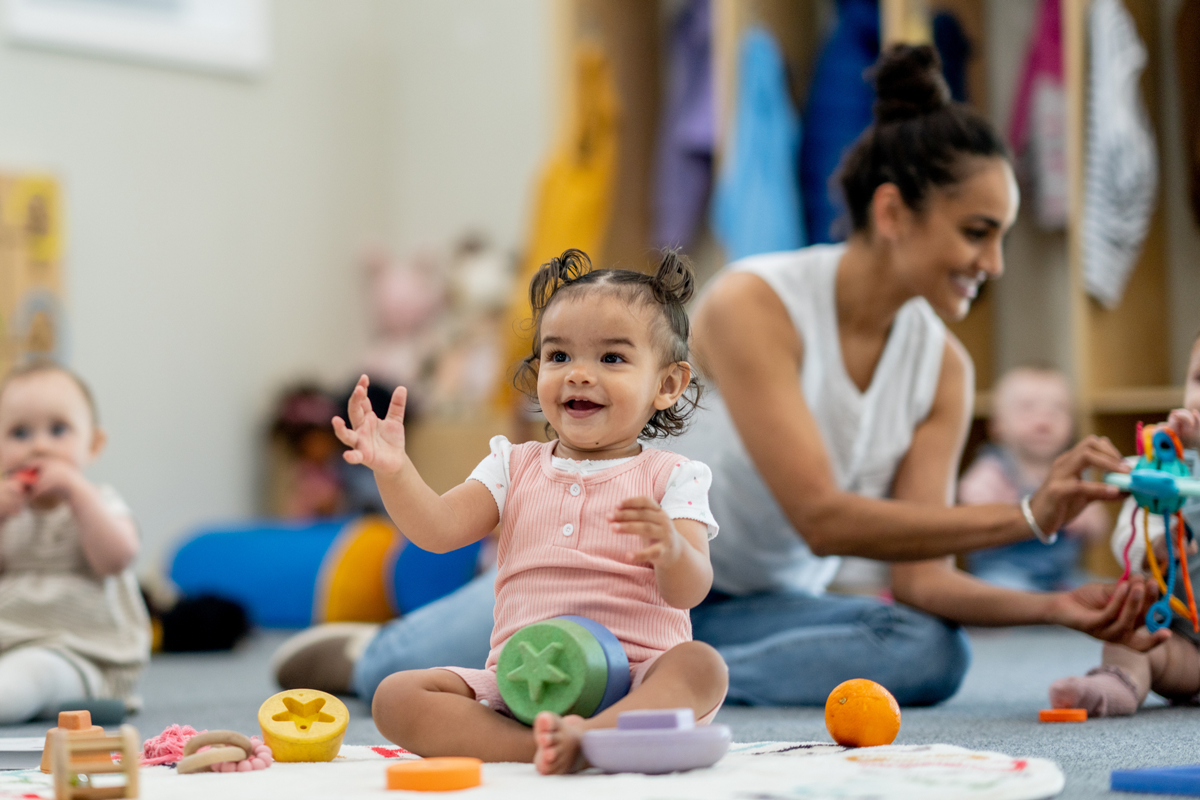Today’s post is about parental leave. Specifically, I want to spend most of it talking about the evidence on the value of paternity leave.
(Quick note: most of the data today will focus on father’s leave in households where the other partner is the birthing parent. I use the term “paternity leave” since that’s typically the language used in the legislation and literature. However, the conclusions are relevant for the general question of leave for non-birthing parents.)
We cannot, though, talk about this issue without first pausing on the maternity leave evidence. As many readers of this newsletter probably know, the U.S. is one of the few countries in the world that do not offer paid maternity leave. The Family and Medical Leave Act of 1993 guarantees 12 weeks of unpaid leave, which can be used post-childbirth. Unpaid leave, of course, is a problem if you do not have resources to cover lost income.
There is a tremendous amount of evidence that paid maternity leave improves outcomes for babies and families. I went through much of this in Cribsheet and also in this post from 2021. Paid leave decreases infant mortality, increases breastfeeding rates, and even translates to higher income decades later. This data is all on top of the basic human observation that it is completely unethical to effectively force women into returning to work two weeks after they have a baby.
Occasionally when I talk about this, people will raise the concern that paid leave is a challenge for employers. In fact, to the extent there is data on that, it does not seem to be a significant concern. Data from employers after California introduced paid parental leave doesn’t suggest changes in turnover or employment outcomes at affected companies, and surveys of employers about paid leave doesn’t indicate they perceive negative impacts on average.
The data here is so clear as to be almost uninteresting. The barriers to getting this done are, of course, political. Despite paid leave being popular on both sides of the aisle, it hasn’t happened. Legislative efforts are ongoing, including the Family and Medical Insurance Leave Act. I’ve included some resources at the end of the post if you’re looking for more information or are interested in taking action.
Today I want to dive into a question where there is interesting new data: the value of paternity leave. It seems clear to me that maternity leave is a higher priority from a policy standpoint. However, most peer countries have not stopped there, and it’s useful to see what impacts paternity leave might have. In addition, from an individual family perspective, this data provides some insight into the value of taking paternity leave if it is offered. Some employers do offer leave for both parents; if they do, what’s the value of using it?
How can we estimate the impacts of paternity leave?
As you might imagine, there are challenges to estimating the impacts of paternity leave on children. Simplifying comparing families in which fathers take leave with those that do not is biased by the fact that the kind of jobs that provide leave to fathers are very different from those that do not. This problem is even more significant than it would be for maternity leave, since paternity leave is less common.
To overcome these challenges, researchers often exploit variation in policy over time. The analysis would look something like the following. A country (or state) changes paternity leave in some way (usually this is either making paternity leave available or changing parental leave so that some of the leave is earmarked for the father). The policy change takes effect on some date — say, June 1, 2012. Families with babies born on May 31, 2012, do not have access to this leave; families with babies born on January 1 do. Other than this policy change, though, the argument is that there is not any systematic reason to expect differences in families with babies born on either side of the cutoff. By comparing outcomes for children and families on either side of this policy date, researchers can argue for causal estimates.
This is sometimes called a regression discontinuity design, or an event study. It’s a good example of how thoughtful research design can make causal inferences even if we do not have randomized trials. I talked more about this type of design in this post a couple of years ago.
Does paternity leave matter for kids?
Paternity leave is common in many European countries. A common approach in places like Sweden has been to have a total number of months of leave that can be split between spouses. In practice, when this is unconstrained, men often take little of the leave. This somewhat defeats the purpose of the policy and also makes it challenging to use it to analyze the impact of paternity leave.
Increasingly, however, these countries have changed policies to incentivize fathers to take leave. They do this by reserving some of the leave for fathers — as in, there is a year of leave, and at least two months must be taken by the father or it is lost. This type of “use it or lose it” approach increases paternal leave-taking.
A study using data from Norway shows just that. This policy reserved four of the 42 weeks of leave for the father. Immediately upon the law’s passage, the share of fathers taking leave increased by about 40 percentage points. Looking in the long term, the authors found that children’s test scores increased in families where fathers took leave.
This particular Norwegian policy has been used to study other outcomes. A second paper argues that the policy — and the resulting leave-taking by fathers — increases equality in chores. From the abstract: We find that respondents who had their last born child just after the reform report an 11% lower level of conflicts over household division of labor and that they are 50% more likely to equally divide the task of washing clothes than respondents who had their last child just before the reform. A third paper using this Norwegian reform finds a small decrease in fathers’ earnings in the long term. This seems to reflect less labor force involvement and more family involvement, so it’s not obvious it should be taken as a “bad” result.
Although this Norwegian policy had significant impacts, a similar policy in Sweden has less encouraging effects. One study shows no impact on the earnings of either parent or the likelihood that dads take care of kids when they are sick. Research also finds an increase in marital dissolution after the policy reform. In Spain, a policy of two weeks of paid paternal leave decreases fertility — this seems to be due to a combination of more labor force attachment for mothers (which makes later fertility more costly for the family) and fathers expressing a lower desire for more children.
What do we take from all this? Looking at it together, I read the results as broadly consistent with enforced paternal leave leading to more fathers’ involvement with children. In turn, this has implications for household work, for earnings, for the fertility choices the families make. The marital dissolution results from Sweden suggest this is not entirely uncomplicated; changing the way that families work is not always smooth.
These results line up with what I hear anecdotally from fathers about concentrated, solo time with babies. The experience of being the one-on-one caregiver to an infant or small child for the whole day every day is quite different from joint caregiving or solo caregiving for a few hours. As one father put it to me:
I think about it this way (no idea if this is backed by the data, so this is a fun stake to put in the ground!): I didn’t feel connected to my kids when they were in my wife’s belly. I was excited, but at a distance. When they came out, I was in awe but still at a bit of a distance. I’m excited, I’d do anything for them, but not the level of deep, deep love I have for them now.
It took a few weeks at least, and maybe a few months, to bond with them. And specifically, it took caring for them — changing diapers, getting them down to sleep, doing the 3 a.m. feed so my wife could sleep, etc. When we switched to formula, I could take care of 100% of their needs. Doing that work was a huge part of what I think has made me feel close to my kids. When my wife had a long business trip and I was a solo parent for that time, it was really hard, but I came out of it feeling so close to both kids in a very specific, bonded way.
As noted, most of this work focuses on data from Europe. There is, however, one study of paternity leave in California. California is the first state to offer paid family leave that would also cover fathers. The work on this has so far focused on leave-taking and found that the program increased paternal leave-taking by about 1 percentage point. Of note, the effects were concentrated in men in occupations that were female-dominated. As other states (perhaps) create similar programs, we are likely to see more evidence.
What about “daddy days” during maternity leave?
Most of the evidence on paternity leave focuses on leave that is taken separately from the mother. An interesting related question is about the value of leave, especially early on, that is taken at the same time. A way to frame this: If the birthing parent has leave for the first weeks, is there any value in the non-birthing parent also taking leave?
Some new data on this comes from Sweden. In 2012 Sweden introduced a reform that generated more flexibility for fathers in taking paternity leave days that overlapped with their partner’s leave. In particular, the number of “daddy days” (as they are called) increased from 10 days around childbirth to 40 days total over the first year. This effectively allowed fathers to take flexible, intermittent days off if they were needed.
Two researchers at Stanford, Petra Persson and Maya Rossin-Slater, analyzed the impacts of this policy. What they found is that this additional flexibility reduces the chance that women have an inpatient visit for a childbirth-related complication in the first month and reduces the chance that they have an antibiotic prescription. There is also some suggestive — less statistically precise — evidence of an impact on maternal mental health.
The authors argue that those effects are consistent with situations in which the flexibility for fathers allows them to take leave when the value of this leave is highest. In a case where, for example, a woman is in the first stages of mastitis, having another pair of hands at home so she can more effectively rest may actually decrease the need for more medical care.
Parental leave resources
Maternity leave should still be our top policy priority in the U.S. However, paternity leave is an important next step. In the shorter term, for individuals and companies, these results are worth considering. Flexibility for overlapping leave in the short term, and concentrated father time in the first year, both appear to have positive impacts.
I asked Dr. Dana Suskind, author of Parent Nation: Unlocking Unlocking Every Child’s Potential, Fulfilling Society’s Promise, to provide some resources for those of you looking for a way to plug into the conversation on paid leave. Here are her suggestions:
- Paid Leave for All: Paid Leave for All is the national campaign of organizations fighting to win paid family and medical leave for all working people.
- MomsRising: MomsRising is doing incredible work to advance equal pay, paid family and medical leave, paid sick days, breastfeeding rights, and other workplace justice policies from the local to federal levels.
- Chamber of Mothers: Created on the 2021 night that paid leave was cut from the legislative agenda, the Chamber of Mothers has been uniting mothers (and others) as effective advocates for family supportive policies ever since.
- Parent Nation: While our advocacy tools are not specific to any one cause, they are designed to empower parents to effectively advocate on any issue that is important to them. Specifically, the Parent Village curriculum helps groups of parents identify the needs of families in their community and create an actionable plan to get those needs met.


















Log in